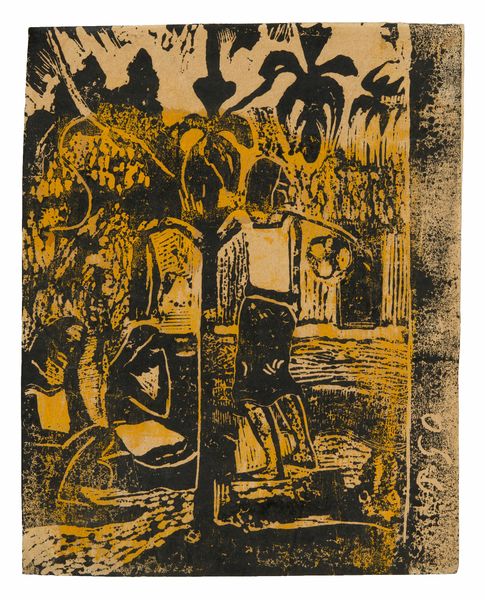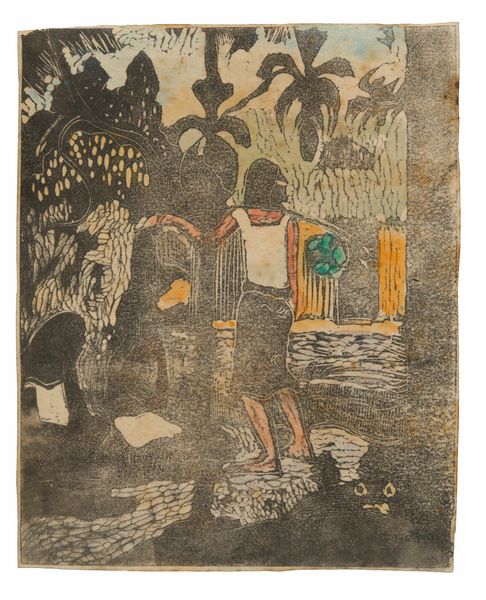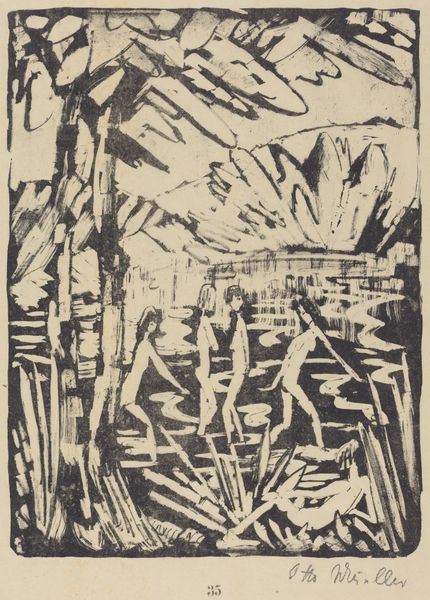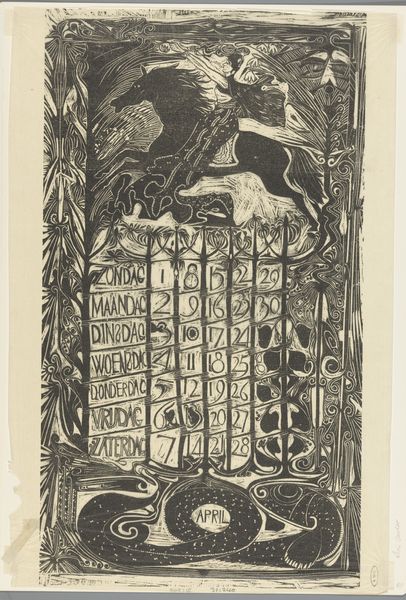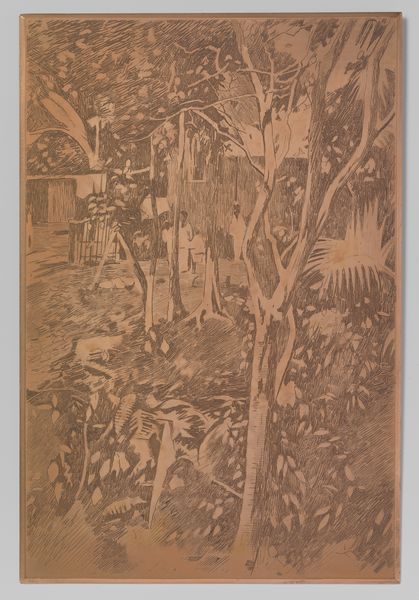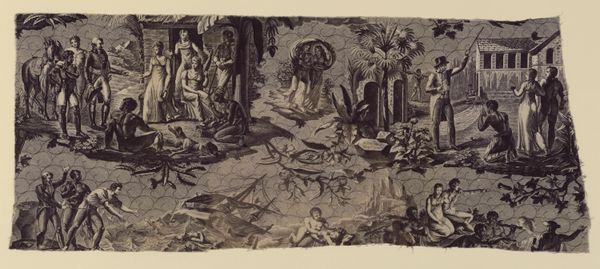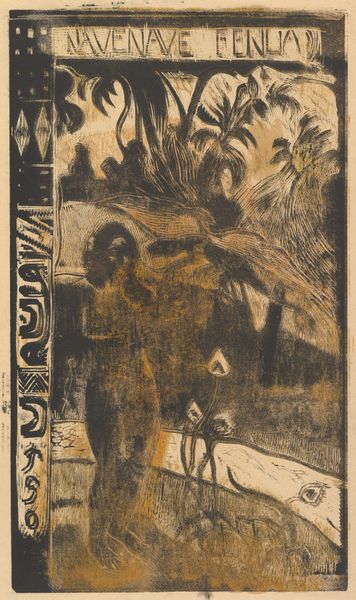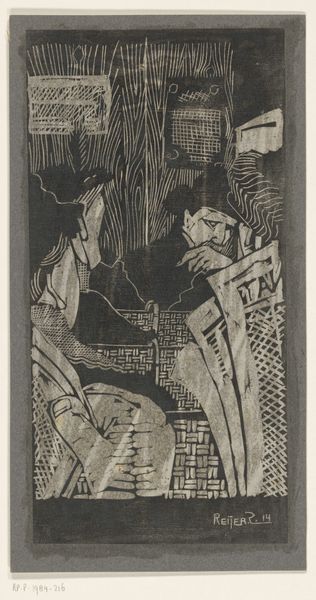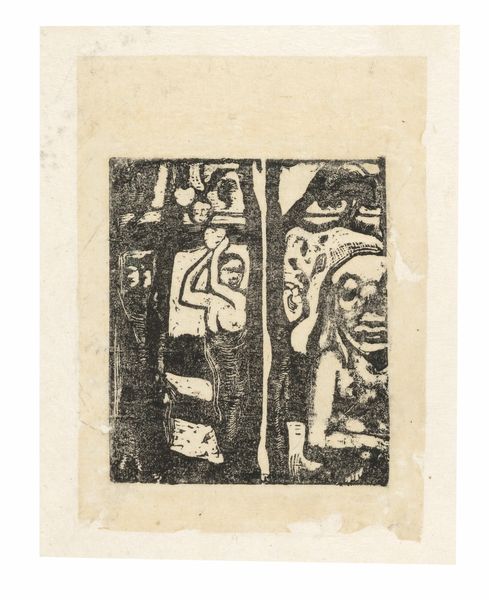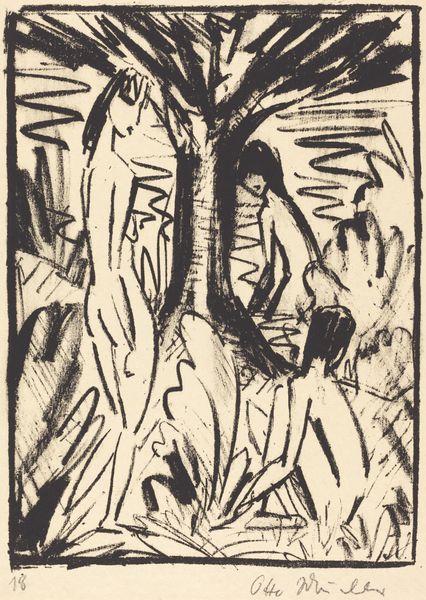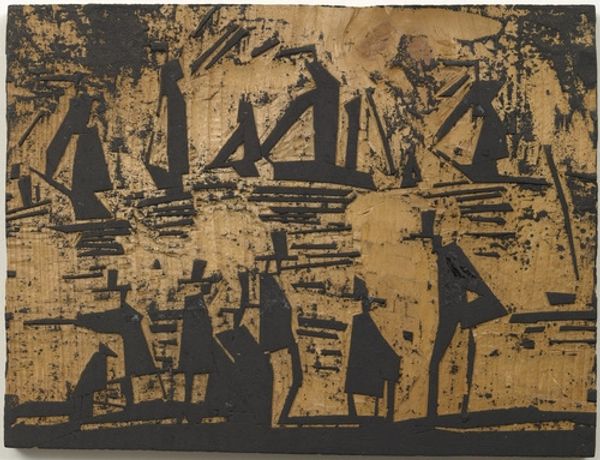
drawing, print, paper, woodblock-print
#
drawing
#
ink painting
#
linocut
# print
#
landscape
#
figuration
#
paper
#
linocut print
#
woodblock-print
#
symbolism
#
post-impressionism
Dimensions: 151 × 119 mm (image/sheet)
Copyright: Public Domain
Editor: Here we have Paul Gauguin's "Noa Noa (Fragrant)," created between 1894 and 1895. It's a striking print on paper. The rough texture and limited palette create a sense of something primitive and raw, a direct contrast to what was academically considered beautiful at that time. What can you tell me about Gauguin’s artistic choices here? Curator: The print certainly presents an intriguing arrangement of forms. Notice the flattening of space, and the simplification of figures. We can begin to interpret "Noa Noa" by examining the artist's choices concerning texture, color, and line. How do these elements work together to construct meaning? Editor: I see the strong lines that define the figures, almost like wood carvings, giving it that crude sensation, while the color palette of ochre and black emphasizes the contrast. So, the composition itself, devoid of detailed figuration, evokes the primitivism that he sought. But what is he saying beyond style and composition? Curator: Consider the formal properties: the layering of forms, the dense patterning, and the interplay of light and shadow. This can give clues as to the themes the artist explores, like the exoticism of Tahiti versus European sophistication, all conveyed by the composition's structural framework. Doesn't this structure reveal, if not replicate, a form of knowledge or idea? Editor: Yes, I can now discern the raw feelings portrayed by contrasting cultures and visual sensations based on just formal elements like shape and color; very fascinating. Curator: Precisely. Through acute observation of these properties, our comprehension transcends conventional understanding, yielding richer artistic awareness.
Comments
No comments
Be the first to comment and join the conversation on the ultimate creative platform.
